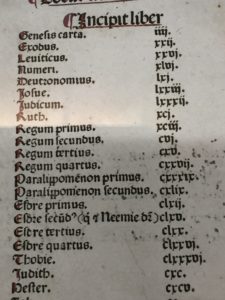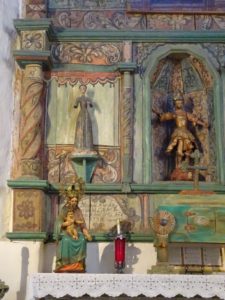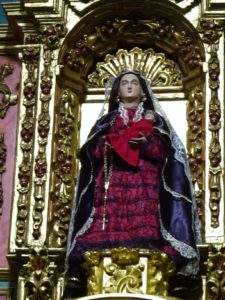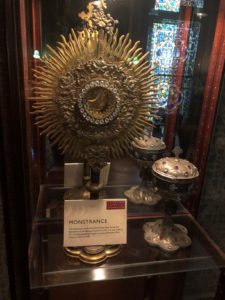
The 5 W’s of Catholic Divine Liturgy
The topic of High Liturgy is too broad to be covered in one blog post. The purpose of this article is the basic understanding of Catholic Mass. At the end, you will find a few suggested resources which cover the topic in greater depth and detail. For continuity, all cited quotes are taken from the Catechism of the Catholic Church (1997. Catechism of The Catholic Church. New York: Doubleday.)
WHO started it? WHOM is it for?
History shows the basic tenets of the Mass have been in place for nearly 2000 years. “As early as the second century we have the witness of St. Justin Martyr for the basic lines of the order of the Eucharistic celebration. They have stayed the same until our own day for all the great liturgical families.” (#1345)
“All gather together. Christians come together in one place for the Eucharistic assembly. At its head is Christ himself, the principal agent of the Eucharist. He is high priest of the New Covenant; it is he himself who presides invisibly over every Eucharistic celebration…. All have their own active parts to play in the celebration, each in his own way….” (#1348)
There are many components of Catholicism that Protestants may participate in. For example, a Catholic may validly marry a non-converted Protestant and remain in “good standing” with the Church. Likewise, Protestants could raise their children to become Catholics without converting. A Protestant could participate in most of the Mass but, because the main focus of the Mass is directly tied to the Eucharist, only practicing Catholics in good standing should participate in Holy Communion. To be in “good standing” means one is: confirmed as a Baptized Catholic (includes valid Protestant baptism); in a State of Grace (no unconfessed mortal sin); in agreement with the doctrine of transubstantiation; observing the Eucharistic Fast (no eating or drinking one hour before Holy Communion, appropriate exclusions apply).
WHAT is the purpose and WHAT happens during Mass?
“The liturgy of the Eucharist unfolds according to a fundamental structure which as been preserved throughout the centuries down to our own day. It displays two great parts that form a fundamental unity:
—-the gathering, the liturgy of the Word, with readings, homily, and general intercessions;
—-the liturgy of the Eucharist, with the presentation of the bread and wine, the consecration thanksgiving, and communion.” (#1346)
WHEN does it occur?
“The Church obliges the faithful to take part in the Divine Liturgy on Sundays and feast days and, prepared by the sacrament of Reconciliation, to receive the Eucharist at least once a year, if possible, during the Easter season. But the Church strongly encourages the faithful to receive the holy Eucharist on Sundays and feast days, or more often still, even daily.” (#1389)
“The precept of the Church specifies the law of the Lord more precisely: ‘On Sundays and other holy days of obligation the faithful are bound to participate in the Mass.’ (2180)
WHERE is it celebrated?
In general, the complete Catholic Mass is meant to be celebrated in a Catholic Church. Certain situations would allow for a priest to seek permission to provide the Mass outside of a church. For example, in a prison, battlefield, or the home of an ill parishioner. The most important element to consider would be in relation to the Eucharist.
In the words of a practicing Catholic: “Basically, the very first Masses were held in people’s homes, when the Church was still so young. Then, during times of persecution (especially in Rome) Masses would often be held in the Catacombs, for the sake of secrecy and safety. In the spirit of unifying the Church on earth and in Heaven, the priests began celebrating the Eucharist on top of the gravestones of martyrs. This gave rise to the tradition of all altars containing relics of a saint. The Church moved Masses into larger spaces for the sake of accommodating groups as soon as Christianity was legalized by Constantine, and I believe those first spaces were the first to be considered church buildings.”
WHY is it important to Catholics?
“’The wonderful works of God among the people of the Old Testament were but a prelude to the work of Christ the Lord in redeeming mankind and giving perfect glory to God. He accomplished this work principally by the Paschal mystery of his blessed Passion, Resurrection from the dead and glorious Ascension…. For this reason, the Church celebrates in the liturgy above all the Paschal mystery by which Christ accomplished the work of our salvation.” (#1067). “It is this mystery of Christ that the Church proclaims and celebrates in her liturgy so that the faithful may live from it and bear witness to the world….” (#1068)
Further Resources:









